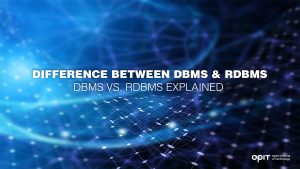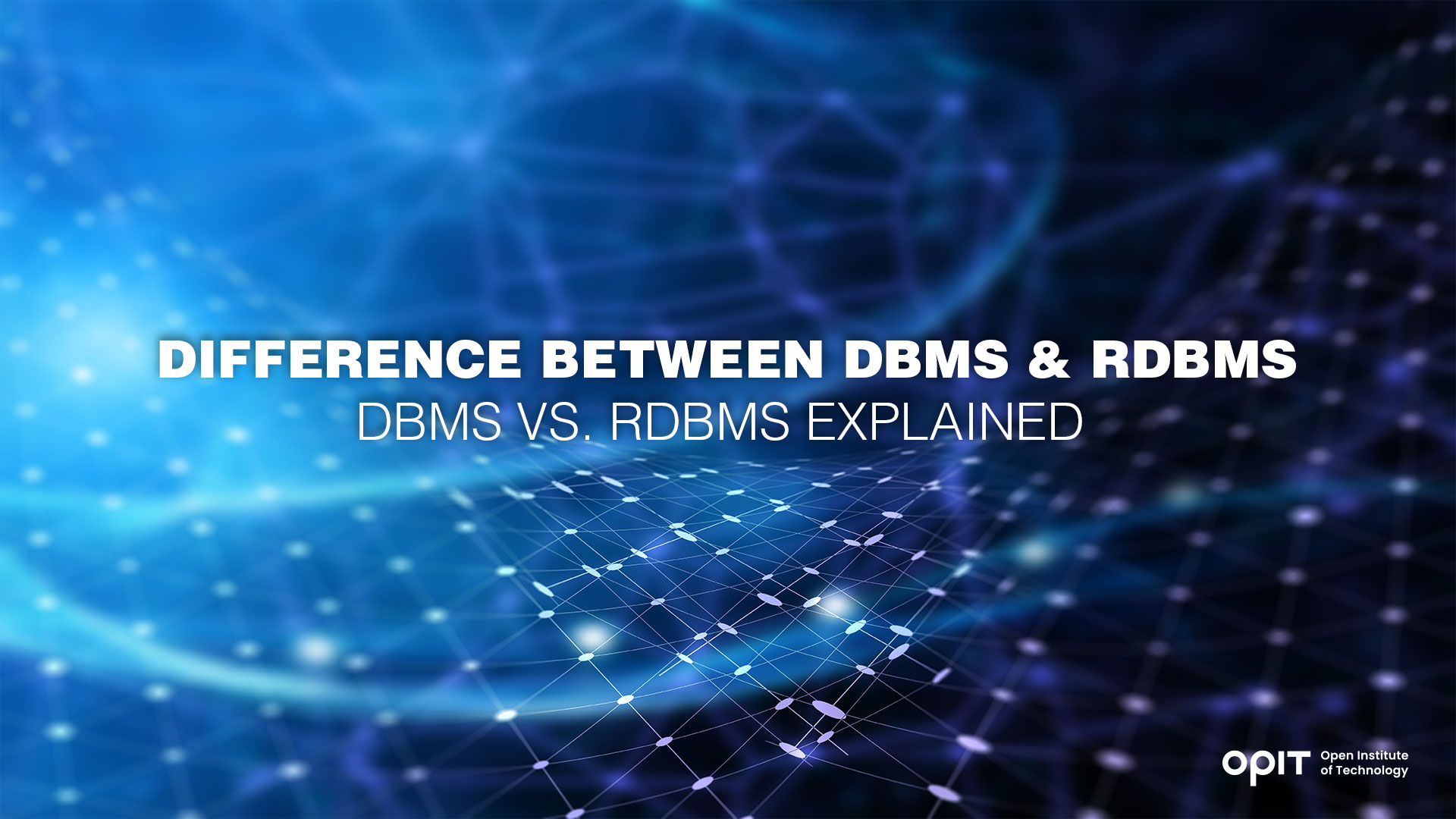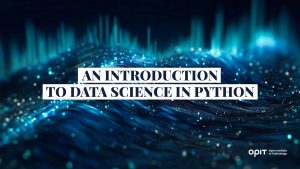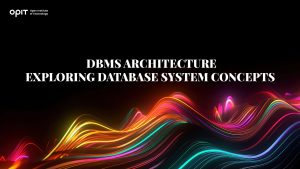

Thanks to many technological marvels of our era, we’ve moved from writing important documents using pen and paper to storing them digitally.
Database systems emerged as the amount and complexity of information we need to keep have increased significantly in the last decades. They represent virtual warehouses for storing documents. Database management systems (DBMS) and relational database management systems (RDBMS) were born out of a burning need to easily control, organize, and edit databases.
Both DBMS and RDBMS represent programs for managing databases. But besides the one letter in the acronym, the two terms differ in several important aspects.
Here, we’ll outline the difference between DBMS and RDBMS, help you learn the ins and outs of both, and choose the most appropriate one.
Definition of DBMS (Database Management Systems)
While working for General Electric during the 1960s, Charles W. Bachman recognized the importance of proper document management and found that the solutions available at the time weren’t good enough. He did his research and came up with a database management system, a program that made storing, editing, and retrieving files a breeze. Unknowingly, Bachman revolutionized the industry and offered the world a convenient database management solution with amazing properties.
Key Features
Over the years, DBMSs have become powerful beasts that allow you to enhance performance and efficiency, save time, and handle huge amounts of data with ease.
One of the key features of DBMSs is that they store information as files in one of two forms: hierarchical or navigational. When managing data, users can use one of several manipulation functions the systems offer:
- Inserting data
- Deleting data
- Updating data
DBMSs are simple structures ideal for smaller companies that don’t deal with huge amounts of data. Only a single user can handle information, which can be a deal-breaker for larger entities.
Although fairly simple, DBMSs bring a lot to the table. They allow you to access, edit, and share data in the blink of an eye. Moreover, DBMSs let you unify your team and have accurate and reliable information on the record, ensuring nobody is left out. They also help you stay compliant with different security and privacy regulations and lower the risk of violations. Finally, having an efficient database management system leads to wiser decision-making that can ultimately save you a lot of time and money.
Examples of Popular DBMS Software
When DBMSs were just becoming a thing, you had software like Clipper and FoxPro. Today, the most popular (and simplest) examples of DBMS software are XML, Windows Registry, and file systems.
Definition of RDBMS (Relational Database Management Systems)
Not long after DBMS came into being, people recognized the need to keep data in the form of tables. They figured storing info in rows (tuples) and columns (attributes) allows a clearer view and easier navigation and information retrieval. This idea led to the birth of relational database management systems (RDBMS) in the 1970s.
Key Features
As mentioned, the only way RDBMSs store information is in the form of tables. Many love this feature because it makes organizing and classifying data according to different criteria a piece of cake. Many companies that use RDBMSs utilize multiple tables to store their data, and sometimes, the information in them can overlap. Fortunately, RDBMSs allow relating data from various tables to one another (hence the name). Thanks to this, you’ll have no trouble adding the necessary info in the right tables and moving it around as necessary.
Since you can relate different pieces of information from your tables to each other, you can achieve normalization. However, normalization isn’t the process of making your table normal. It’s a way of organizing information to remove redundancy and enhance data integrity.
In this technological day and age, we see data growing exponentially. If you’re working with RDBMSs, there’s no need to be concerned. The systems can handle vast amounts of information and offer exceptional speed and total control. Best of all, multiple users can access RDBMSs at a time and enhance your team’s efficiency, productivity, and collaboration.
Simply put, an RDBMS is a more advanced, powerful, and versatile version of DBMS. It offers speed, plenty of convenient features, and ease of use.
Examples of Popular RDBMS Software
As more and more companies recognize the advantages of using RDBMS, the availability of software grows by the day. Those who have tried several options agree that Oracle and MySQL are among the best choices.
Key Differences Between DBMS and RDBMS
Now that you’ve learned more about DBMS and RDBMS, you probably have an idea of the most significant differences between them. Here, we’ll summarize the key DBMS vs. RDBMS differences.
Data Storage and Organization
The first DBMS and RDBMS difference we’ll analyze is the way in which the systems store and organize information. With DBMS, data is stored and organized as files. This system uses either a hierarchical or navigational form to arrange the information. With DBMS, you can access only one element at a time, which can lead to slower processing.
On the other hand, RDBMS uses tables to store and display information. The data featured in several tables can be related to each other for ease of use and better organization. If you want to access multiple elements at the same time, you can; there are no constraints regarding this, as opposed to DBMS.
Data Integrity and Consistency
When discussing data integrity and consistency, it’s necessary to explain the concept of constraints in DBMS and RDBMS. Constraints are sets of “criteria” applied to data and/or operations within a system. When constraints are in place, only specific types of information can be displayed, and only specific operations can be completed. Sounds restricting, doesn’t it? The entire idea behind constraints is to enhance the integrity, consistency, and correctness of data displayed within a database.
DBMS lacks constraints. Hence, there’s no guarantee the data within this system is consistent or correct. Since there are no constraints, the risk of errors is higher.
RDBMS have constraints, resulting in the reliability and integrity of the data. Plus, normalization (removing redundancies) is another option that contributes to data integrity in RDBMS. Unfortunately, normalization can’t be achieved in DBMS.
Query Language and Data Manipulation
DBMS uses multiple query languages to manipulate data. However, none of these languages offer the speed and convenience present in RDBMS.
RDBMS manipulates data with structured query language (SQL). This language lets you retrieve, create, insert, or drop data within your relational database without difficulty.
Scalability and Performance
If you have a small company and/or don’t need to deal with vast amounts of data, a DBMS can be the way to go. But keep in mind that a DBMS can only be accessed by one person at a time. Plus, there’s no option to access more than one element at once.
With RDBMSs, scalability and performance are moved to a new level. An RDBMS can handle large amounts of information in a jiff. It also supports multiple users and allows you to access several elements simultaneously, thus enhancing your efficiency. This makes RDBMSs excellent for larger companies that work with large quantities of data.
Security and Access Control
Last but not least, an important difference between DBMS and RDBMS lies in security and access control. DBMSs have basic security features. Therefore, there’s a higher chance of breaches and data theft.
RDBMSs have various security measures in place that keep your data safe at all times.
Choosing the Right Database Management System
The first criterion that will help you make the right call is your project’s size and complexity. Small projects with relatively simple data are ideal for DBMSs. But if you’re tackling a lot of complex data, RDBMSs are the logical option.
Next, consider your budget and resources. Since they’re simpler, DBMSs are more affordable, in both aspects. RDBMSs are more complex, so naturally, the price of software is higher.
Finally, the factor that affects what option is the best for you is the desired functionality. What do you want from the program? Is it robust features or a simple environment with a few basic options? Your answer will guide you in the right direction.
Pros and Cons of DBMS and RDBMS
DBMS
Pros:
- Doesn’t involve complex query processing
- Cost-effective solution
- Ideal for processing small data
- Easy data handling via basic SQL queries
Cons:
- Doesn’t allow accessing multiple elements at once
- No way to relate data
- Doesn’t inherently support normalization
- Higher risk of security breaches
- Single-user system
RDBMS
Pros:
- Advanced, robust, and well-organized
- Ideal for large quantities of information
- Data from multiple tables can be related
- Multi-user system
- Supports normalization
Cons:
- More expensive
- Complex for some people
Examples of Use Cases
DBMS
DBMS is used in many sectors where more basic storing and management of data is required, be it sales and marketing, education, banking, or online shopping. For instance, universities use DBMS to store student-related data, such as registration details, fees paid, attendance, exam results, etc. Libraries use it to manage the records of thousands of books.
RDBMS
RDBMS is used in many industries today, especially those continuously requiring processing and storing large volumes of data. For instance, Airline companies utilize RDBMS for passenger and flight-related information and schedules. Human Resource departments use RDBMS to store and manage information related to employees and their payroll statistics. Manufacturers around the globe use RDBMS for operational data, inventory management and supply chain information.
Choose the Best Solution
An RDBM is a more advanced and powerful younger sibling of a DBMS. While the former offers more features, convenience, and the freedom to manipulate data as you please, it isn’t always the right solution. When deciding which road to take, prioritize your needs.
Related posts

Source:
- Agenda Digitale, published on November 25th, 2025
In recent years, the word ” sustainability ” has become a firm fixture in the corporate lexicon. However, simply “doing no harm” is no longer enough: the climate crisis , social inequalities , and the erosion of natural resources require a change of pace. This is where the net-positive paradigm comes in , a model that isn’t content to simply reduce negative impacts, but aims to generate more social and environmental value than is consumed.
This isn’t about philanthropy, nor is it about reputational makeovers: net-positive is a strategic approach that intertwines economics, technology, and corporate culture. Within this framework, digitalization becomes an essential lever, capable of enabling regenerative models through circular platforms and exponential technologies.
Blockchain, AI, and IoT: The Technological Triad of Regeneration
Blockchain, Artificial Intelligence, and the Internet of Things represent the technological triad that makes this paradigm shift possible. Each addresses a critical point in regeneration.
Blockchain guarantees the traceability of material flows and product life cycles, allowing a regenerated dress or a bottle collected at sea to tell their story in a transparent and verifiable way.
Artificial Intelligence optimizes recovery and redistribution chains, predicting supply and demand, reducing waste and improving the efficiency of circular processes .
Finally, IoT enables real-time monitoring, from sensors installed at recycling plants to sharing mobility platforms, returning granular data for quick, informed decisions.
These integrated technologies allow us to move beyond linear vision and enable systems in which value is continuously regenerated.
New business models: from product-as-a-service to incentive tokens
Digital regeneration is n’t limited to the technological dimension; it’s redefining business models. More and more companies are adopting product-as-a-service approaches , transforming goods into services: from technical clothing rentals to pay-per-use for industrial machinery. This approach reduces resource consumption and encourages modular design, designed for reuse.
At the same time, circular marketplaces create ecosystems where materials, components, and products find new life. No longer waste, but input for other production processes. The logic of scarcity is overturned in an economy of regenerated abundance.
To complete the picture, incentive tokens — digital tools that reward virtuous behavior, from collecting plastic from the sea to reusing used clothing — activate global communities and catalyze private capital for regeneration.
Measuring Impact: Integrated Metrics for Net-Positiveness
One of the main obstacles to the widespread adoption of net-positive models is the difficulty of measuring their impact. Traditional profit-focused accounting systems are not enough. They need to be combined with integrated metrics that combine ESG and ROI, such as impact-weighted accounting or innovative indicators like lifetime carbon savings.
In this way, companies can validate the scalability of their models and attract investors who are increasingly attentive to financial returns that go hand in hand with social and environmental returns.
Case studies: RePlanet Energy, RIFO, and Ogyre
Concrete examples demonstrate how the combination of circular platforms and exponential technologies can generate real value. RePlanet Energy has defined its Massive Transformative Purpose as “Enabling Regeneration” and is now providing sustainable energy to Nigerian schools and hospitals, thanks in part to transparent blockchain-based supply chains and the active contribution of employees. RIFO, a Tuscan circular fashion brand, regenerates textile waste into new clothing, supporting local artisans and promoting workplace inclusion, with transparency in the production process as a distinctive feature and driver of loyalty. Ogyre incentivizes fishermen to collect plastic during their fishing trips; the recovered material is digitally tracked and transformed into new products, while the global community participates through tokens and environmental compensation programs.
These cases demonstrate how regeneration and profitability are not contradictory, but can actually feed off each other, strengthening the competitiveness of businesses.
From Net Zero to Net Positive: The Role of Massive Transformative Purpose
The crucial point lies in the distinction between sustainability and regeneration. The former aims for net zero, that is, reducing the impact until it is completely neutralized. The latter goes further, aiming for a net positive, capable of giving back more than it consumes.
This shift in perspective requires a strong Massive Transformative Purpose: an inspiring and shared goal that guides strategic choices, preventing technology from becoming a sterile end. Without this level of intentionality, even the most advanced tools risk turning into gadgets with no impact.
Regenerating business also means regenerating skills to train a new generation of professionals capable not only of using technologies but also of directing them towards regenerative business models. From this perspective, training becomes the first step in a transformation that is simultaneously cultural, economic, and social.
The Regenerative Future: Technology, Skills, and Shared Value
Digital regeneration is not an abstract concept, but a concrete practice already being tested by companies in Europe and around the world. It’s an opportunity for businesses to redefine their role, moving from mere economic operators to drivers of net-positive value for society and the environment.
The combination of blockchain, AI, and IoT with circular product-as-a-service models, marketplaces, and incentive tokens can enable scalable and sustainable regenerative ecosystems. The future of business isn’t just measured in terms of margins, but in the ability to leave the world better than we found it.

Source:
- Raconteur, published on November 06th, 2025
Many firms have conducted successful Artificial Intelligence (AI) pilot projects, but scaling them across departments and workflows remains a challenge. Inference costs, data silos, talent gaps and poor alignment with business strategy are just some of the issues that leave organisations trapped in pilot purgatory. This inability to scale successful experiments means AI’s potential for improving enterprise efficiency, decision-making and innovation isn’t fully realised. So what’s the solution?
Although it’s not a magic bullet, an AI operating model is really the foundation for scaling pilot projects up to enterprise-wide deployments. Essentially it’s a structured framework that defines how the organisation develops, deploys and governs AI. By bringing together infrastructure, data, people, and governance in a flexible and secure way, it ensures that AI delivers value at scale while remaining ethical and compliant.
“A successful AI proof-of-concept is like building a single race car that can go fast,” says Professor Yu Xiong, chair of business analytics at the UK-based Surrey Business School. “An efficient AI technology operations model, however, is the entire system – the processes, tools, and team structures – for continuously manufacturing, maintaining, and safely operating an entire fleet of cars.”
But while the importance of this framework is clear, how should enterprises establish and embed it?
“It begins with a clear strategy that defines objectives, desired outcomes, and measurable success criteria, such as model performance, bias detection, and regulatory compliance metrics,” says Professor Azadeh Haratiannezhadi, co-founder of generative AI company Taktify and professor of generative AI in cybersecurity at OPIT – the Open Institute of Technology.
Platforms, tools and MLOps pipelines that enable models to be deployed, monitored and scaled in a safe and efficient way are also essential in practical terms.
“Tools and infrastructure must also be selected with transparency, cost, and governance in mind,” says Efrain Ruh, continental chief technology officer for Europe at Digitate. “Crucially, organisations need to continuously monitor the evolving AI landscape and adapt their models to new capabilities and market offerings.”
An open approach
The most effective AI operating models are also founded on openness, interoperability and modularity. Open source platforms and tools provide greater control over data, deployment environments and costs, for example. These characteristics can help enterprises to avoid vendor lock-in, successfully align AI to business culture and values, and embed it safely into cross-department workflows.
“Modularity and platformisation…avoids building isolated ‘silos’ for each project,” explains professor Xiong. “Instead, it provides a shared, reusable ‘AI platform’ that integrates toolchains for data preparation, model training, deployment, monitoring, and retraining. This drastically improves efficiency and reduces the cost of redundant work.”
A strong data strategy is equally vital for ensuring high-quality performance and reducing bias. Ideally, the AI operating model should be cloud and LLM agnostic too.
“This allows organisations to coordinate and orchestrate AI agents from various sources, whether that’s internal or 3rd party,” says Babak Hodjat, global chief technology officer of AI at Cognizant. “The interoperability also means businesses can adopt an agile iterative process for AI projects that is guided by measuring efficiency, productivity, and quality gains, while guaranteeing trust and safety are built into all elements of design and implementation.”
A robust AI operating model should feature clear objectives for compliance, security and data privacy, as well as accountability structures. Richard Corbridge, chief information officer of Segro, advises organisations to: “Start small with well-scoped pilots that solve real pain points, then bake in repeatable patterns, data contracts, test harnesses, explainability checks and rollback plans, so learning can be scaled without multiplying risk. If you don’t codify how models are approved, deployed, monitored and retired, you won’t get past pilot purgatory.”
Of course, technology alone can’t drive successful AI adoption at scale: the right skills and culture are also essential for embedding AI across the enterprise.
“Multidisciplinary teams that combine technical expertise in AI, security, and governance with deep business knowledge create a foundation for sustainable adoption,” says Professor Haratiannezhadi. “Ongoing training ensures staff acquire advanced AI skills while understanding associated risks and responsibilities.”
Ultimately, an AI operating model is the playbook that enables an enterprise to use AI responsibly and effectively at scale. By drawing together governance, technological infrastructure, cultural change and open collaboration, it supports the shift from isolated experiments to the kind of sustainable AI capability that can drive competitive advantage.
In other words, it’s the foundation for turning ambition into reality, and finally escaping pilot purgatory for good.
Have questions?
Visit our FAQ page or get in touch with us!
Write us at +39 335 576 0263
Get in touch at hello@opit.com
Talk to one of our Study Advisors
We are international
We can speak in:


